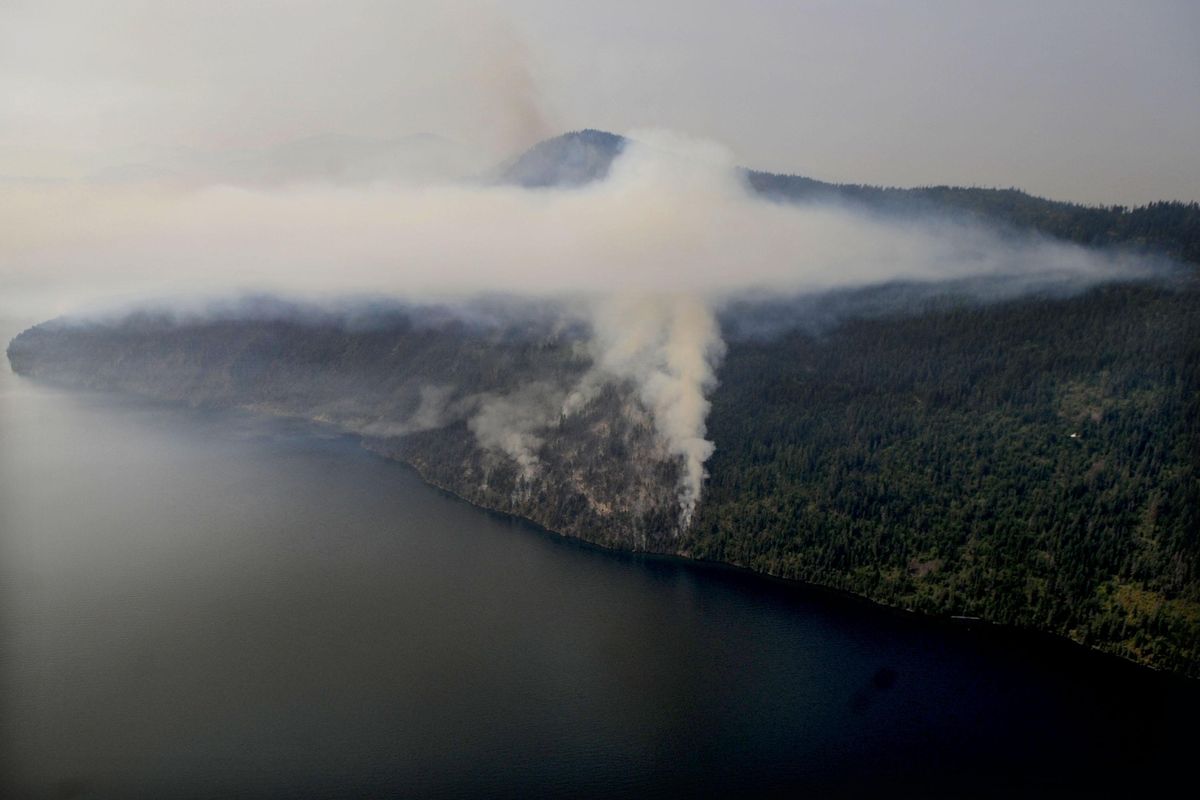After yearlong probe, answers expected soon in cause of Cape Horn fire

The residents of Bayview and homeowners along Cape Horn Road have waited a year for answers to what nearly was a catastrophic wildfire for the community on the south end of Lake Pend Oreille.
Nine homes were destroyed and 1,300 acres of public and private land burned in the Cape Horn fire last July, but it could have been much worse. Hundreds of homes, cabins and businesses were at risk of going up in flames.
It took 12 days to contain the blaze, at a cost of about $6 million.
Investigators quickly determined it was human-caused, not sparked by lightning. They also don’t believe it was arson or related to commercial logging in the area. But exactly how the fire started and who was responsible have not been revealed.
Sometime this month, the Idaho Department of Lands expects to release its much-anticipated report on the fire investigation, including whether anyone was negligent in causing it. If they were, they would be liable for the firefighting costs as well as property damage.
“Regardless of the conclusion that we reach at this point, the investigation always remains open,” said David Groeschl, the state forester and deputy director of the Department of Lands.
Sometimes new evidence or statements emerge years later in such investigations, Groeschl cautioned.
The Cape Horn investigation took almost a year in part because of the wait for results of forensic testing of evidence collected from the area where the fire started, he said. The state sent its evidence to the Idaho State Police lab, which has a backlog of cases. Investigators then decided to forward some of the evidence to a private lab that specializes in microforensic testing, Groeschl said.
Multiple interviews with witnesses also took time, he said, as investigators needed to review statements and conduct follow-up interviews. Those who were questioned “were generally cooperative,” Groeschl said.
“We’ve had fire investigations take two years to complete,” he said. “It just depends on how many people you need to interview, what kind of evidence you’re talking about, the kind of testing that needs to occur, finding the right labs to test that evidence. It can take a while.”
The fire broke out midday on July 5 near the shoreline just north of the homes at the end of Cape Horn Road, and it was reported to 911 at 12:16 p.m. From there, it climbed steep, rocky terrain through timber belonging to Stimson Lumber Co., as well as some adjacent U.S. Forest Service land.
Conditions were ripe for the fire to blow up: steep slopes, bone-dry brush and trees, and sustained winds of 30 to 35 mph.
“It grew quickly, just because of those factors,” Groeschl said. “It was threatening homes very quickly during the initial stage of the fire.”
From the lake, the flames scaled some 2,000 feet toward Cape Horn Peak and crested the ridge, while also moving around the slope and down toward homes and cabins overlooking the lake along Cape Horn Road.
Investigators ruled out some of the potential causes of the fire to narrow their focus on the actual cause.
“We do not suspect arson and we do not believe it was a natural-caused fire. It was human-caused,” Groeschl said.
The report will describe how investigators believe the fire started, with three potential conclusions: the responsible party was negligent, they were not negligent or negligence could not be determined.
“You have to be fairly certain when you make that determination” of negligence, Groeschl said.
Sometimes people accidentally spark a wildfire when a piece of equipment malfunctions. “We don’t bill for that fire,” Groeschl said.
Negligence could apply to someone who ignores a ban on campfires or who torches a pile of leaves without the required burn permit.
“If negligence is determined, then we bill for the suppression cost of that fire,” including the mop-up phase and the post-fire patrol to ensure smoldering roots don’t cause the fire to resurface, Groeschl said.
For the Cape Horn fire, that estimate stands at about $5.7 million, although final firefighting bills from the Forest Service and the federal Bureau of Land Management have not been submitted.
Property owners or their insurers also could file claims to recover losses of homes, cars or timber. Almost 500 acres of the burn area are owned by Stimson Lumber, with another 331 acres under other private ownership. Another 260 acres are Forest Service land, and 194 acres are state endowment lands.
The state cleared burned trees from its land and planted 7,600 ponderosa pine seedlings this spring.
Soon after the Cape Horn fire, the state began fielding questions about the cause, including speculation that boaters or campers had started it.
“People want us to confirm things, and we can’t,” Groeschl said. “If you were the potential suspect of starting the fire like that, you would want to be treated fairly, objectively, and you would want us to base whatever it is on the facts, the evidence.”